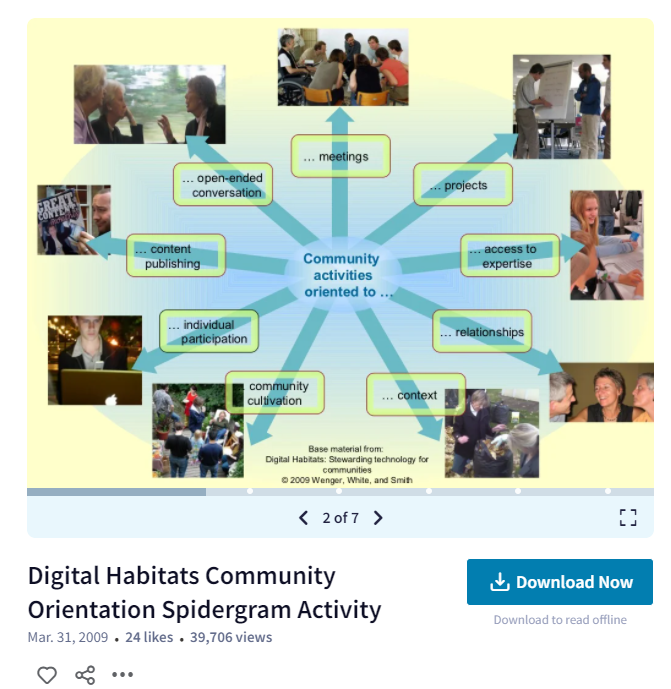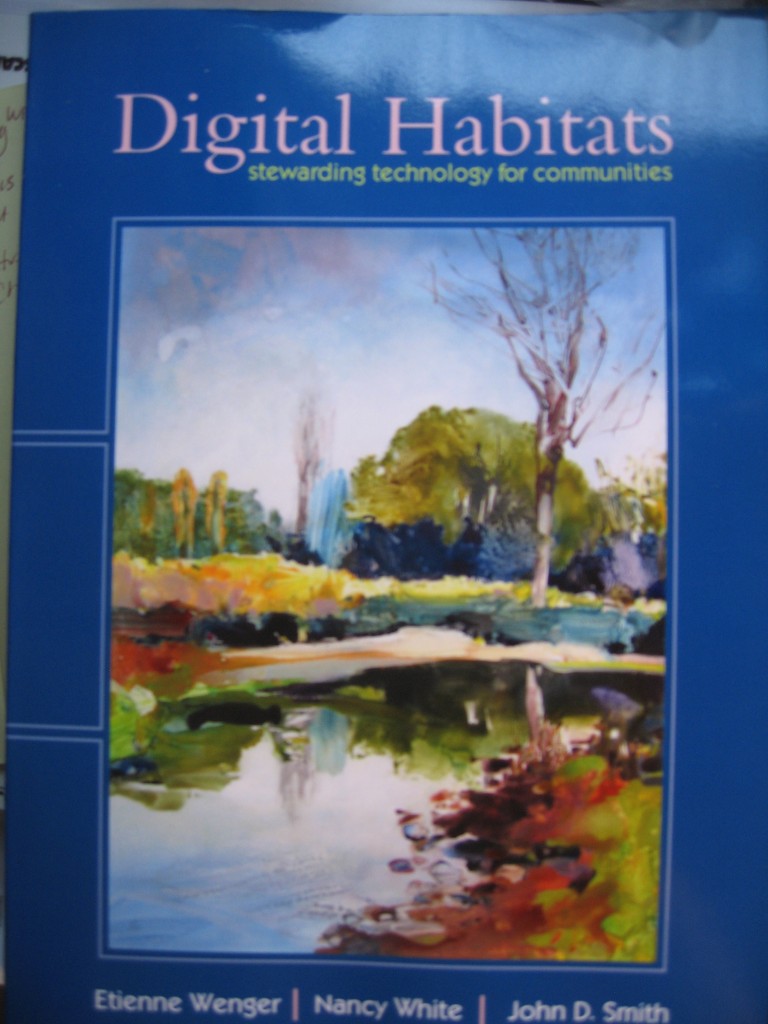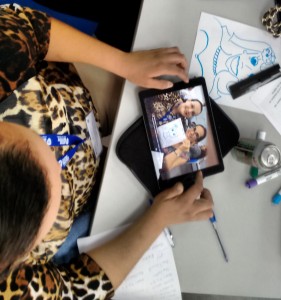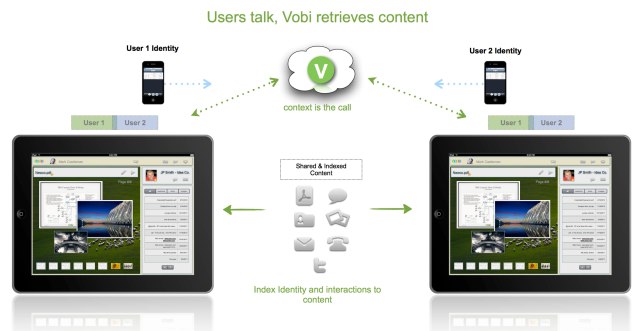
In 2009 Etienne Wenger (now Etienne Wenger-Trayner), John D. Smith and I published the culmination of lots and lots of thinking about how to use technology to support groups and communities. Digital Habitats: stewarding technology for communities was our way of trying to make sense of the tech landscape so that communities could provision their tech without having to be a total technologist.
In my archive of drafts was this post with just one paragraph:
What are the patterns of interaction over time, what are the configurations of technology over time, and are these distinct enough patterns so that we can simply template the tech and process, or do these change enough with and every interaction? And we need to know how to do that.
With the rebirth of virtual and hybrid work, this is again a useful question, even if I can’t figure out what I meant with the last sentence! 🙂
Let me give an example of why this fascinates me.
We have a group of people who need to work/learn/do something together. At the minimum these days they have Zoom or some other synchronous video meeting tool. Most groups also have a shared document space. For what types of work is this minimal tech configuration (set of tools and how they are used) sufficient? Is there a pattern that says “simple configuration is all you need?”
If the simple configuration is adequate, what types of group need trigger more tech tools and processes? For example, we used to think that groups distributed across diverse time zones needed asynchronous communication tools in addition to the sync (video) and content sharing.
If a group has more complicated content needs, do they need more tools for the creation, curation and sharing of content? What triggers this next level of need?
If a group is handed a very complicated technology configuration right off the bat (our corporate platform!!) that has more tools and features than the group needs, what impact does this have upon their work? Will they reduce their efficacy messing around and tripping on the tech? Fully ignore the platform? Invent whole new ways of using the tech?
Do you see what I’m getting at… there are both stable patterns AND lots of ways to subvert the patterns. So my question is, is it worth spending time to develop the patterns at all, or just let things emerge? When? Why? (I do NOT have the answer. Just the curiosity!) Oh, I see Ton is also writing about this!
By the way, if you are still reading, I discovered a box of Digital Habitats books in my basement. If you would like a copy and are in the US I’d be happy to mail you one. Let me know in the comments. If you want to reimburse me for postage, I’ll mail one further afield. They do no good sitting in my basement. And you can always get the free PDF on the website.



